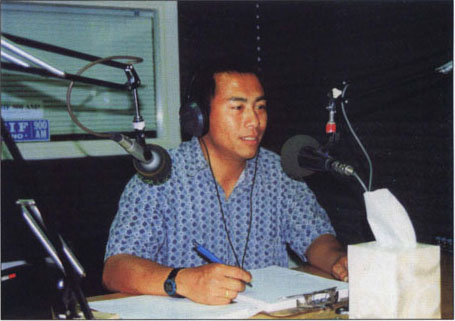All Issues
Radio reaches Hmong farmers
Publication Information
California Agriculture 53(6):14-15.
Published November 01, 1999
PDF | Citation | Permissions
Full text
After the Vietnam War, about 300,000 Hmong, Mien and Lao political refugees came to the United States, including 35,000 Hmong who settled in Fresno County. Known as the “;mountain people” of Laos, the Fresno County community represents the largest single concentration of Hmong in the United States.
About 630 of Fresno County's Hmong are small farmers. Although many were farmers in Laos, they often find that the practices they learned there are not applicable in California. They often possess limited English language skills, according to Fresno County small farms advisor Richard Molinar.
Molinar and his colleagues tried a variety of methods to provide information to Hmong farmers — newsletters in English and Hmong, grower meetings, newspapers and other publications, video and audio cassettes, telephone, television and one-on-one visits, all with limited success.
Then in February 1998, Molinar and Fresno County Cooperative Extension field assistant Michael Yang launched a 30-minute biweekly radio broadcast program, every other Monday, on local Hmong radio station KBIF.
“;This radio show proved to be by far the best method of communicating with Hmong farmers. Our program was broadcast in Hmong and presented in a regularly scheduled block of time when farmers were likely to be home,” he said.
The $1,800 to purchase air time for the first year was provided by the local USDA Farm Service Agency and UC's statewide Small Farm Center.
Yang, who speaks Hmong, prepared each program script. For 20 minutes of each broadcast, he presented topics relevant for local farmers, leaving 10 minutes to answer callers' questions. Half of his program covers UC topics including pesticide safety and crop production practices, and the other half is devoted to USDA subjects including farm loans and El Ni$nTo and freeze disaster assistance.
“;The radio program has been a phenomenal success,” Molinar says, “;probably the single most successful outreach method. Phone calls from Hmong farmers increased 300% during the first 6 months of the show, and during the last 6 months of the show, the increase was almost 800%. Calls into our office were especially heavy after announcements about farm loans and disaster assistance.”
The radio show filled an unanswered need. Surveys conducted in Fresno County had shown that many first-generation Hmong farmers had limited reading skills, even in their own language, which meant the printed material had limited usefulness. Their comprehension of spoken English was 40% to 60% so they tended not to attend general grower meetings. Attendance improved where an interpreter was provided, but less material could be covered because translation took time. Television was very expensive and the Hmong had expressed little interest in video and audio cassettes.
At the end of each show, Yang quoted current market prices for selected specialty vegetables. The broadcast aired from 9:30 pm to 10 pm and covered the whole Central Valley.
Listeneis have been willing to participate in activities announced during the program.
“;We filled a 7-week continuing-education class (20 farmers) within 1 week after the announcement went out over the radio,” Molinar says. “;We filled a market bus tour in 2 weeks with 45 farmers after one announcement was made.”
He attributes the success of the radio program to using a radio station that caters specifically to Hmong, scheduling the broadcasts for a time when farmers are home, purchasing time for consistent broadcasts, having someone who is fluent in Hmong present the program; and being prepared to answer phone calls.
Although topics cannot be discussed in much detail during the show and the airtime must be purchased, Molinar thinks the advantage of reaching large numbers of farmers through radio outweighs the disadvantages.
“;Because of these broadcasts, many more Hmong refugees are aware of our respective offices and the services we all have to offer,” Molinar says.
Everyone involved in the project was pleased with the results of the first year. The program is continuing with its second yearlong contract. — Pamela Kan-Rice





